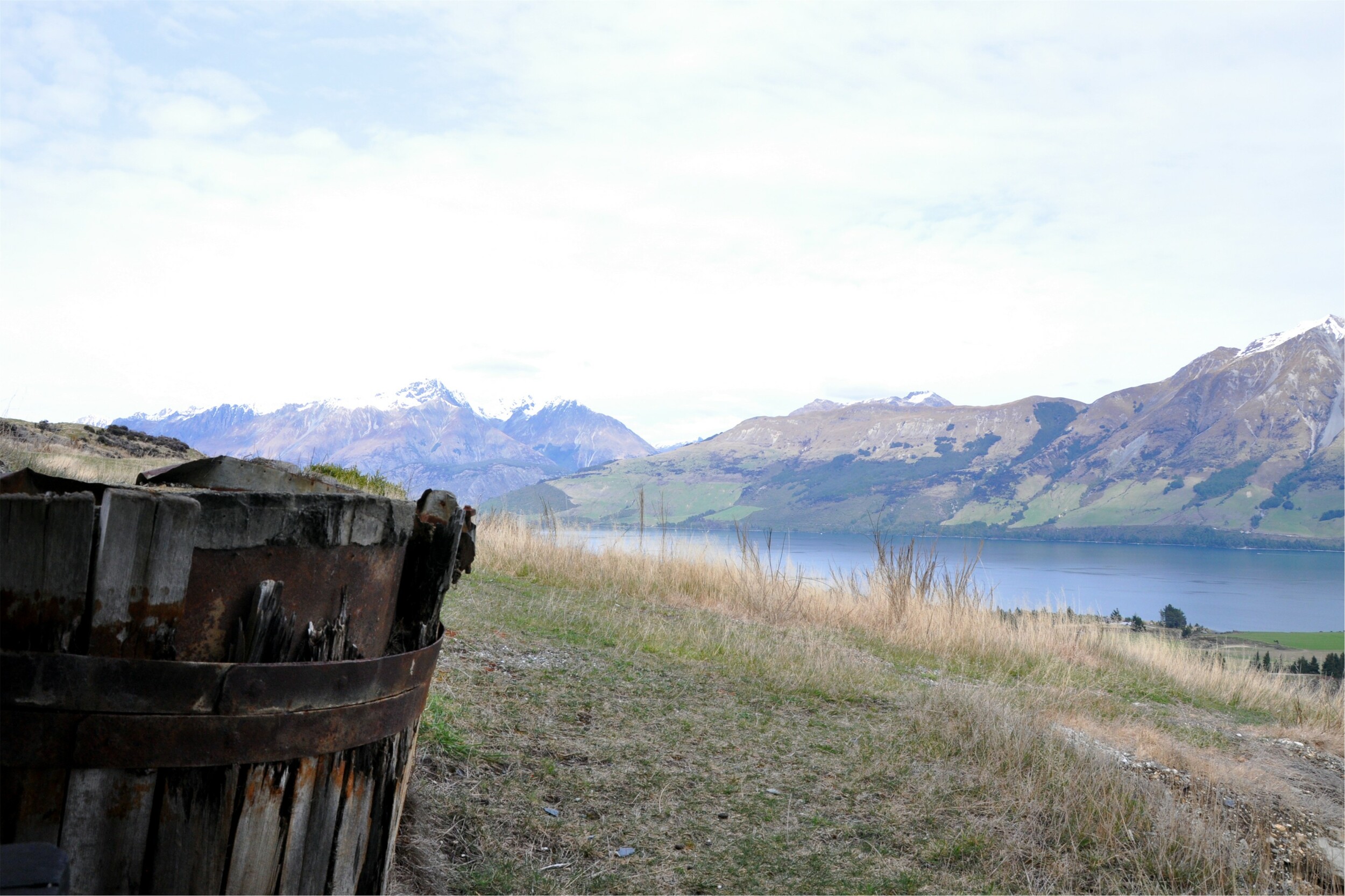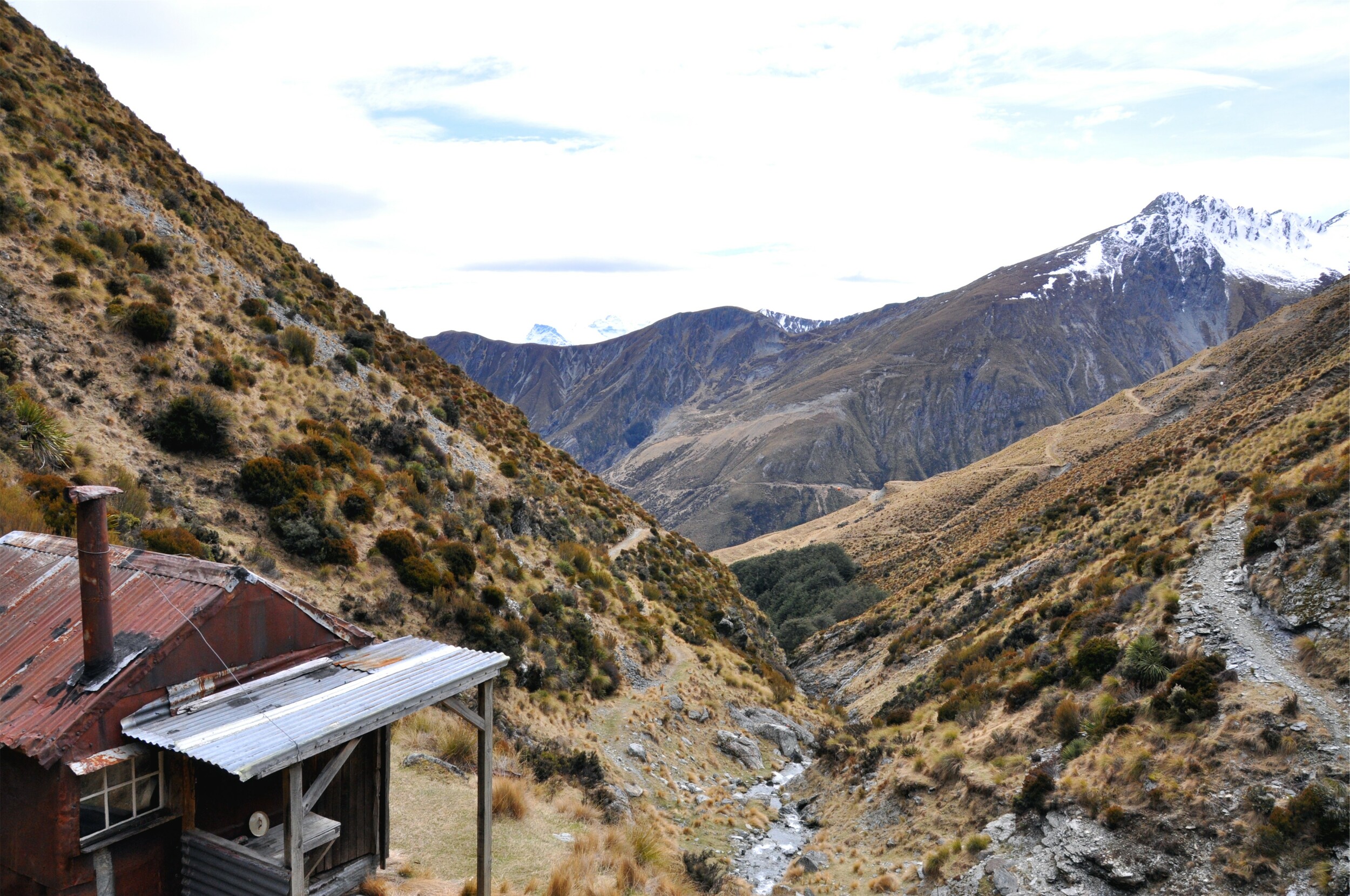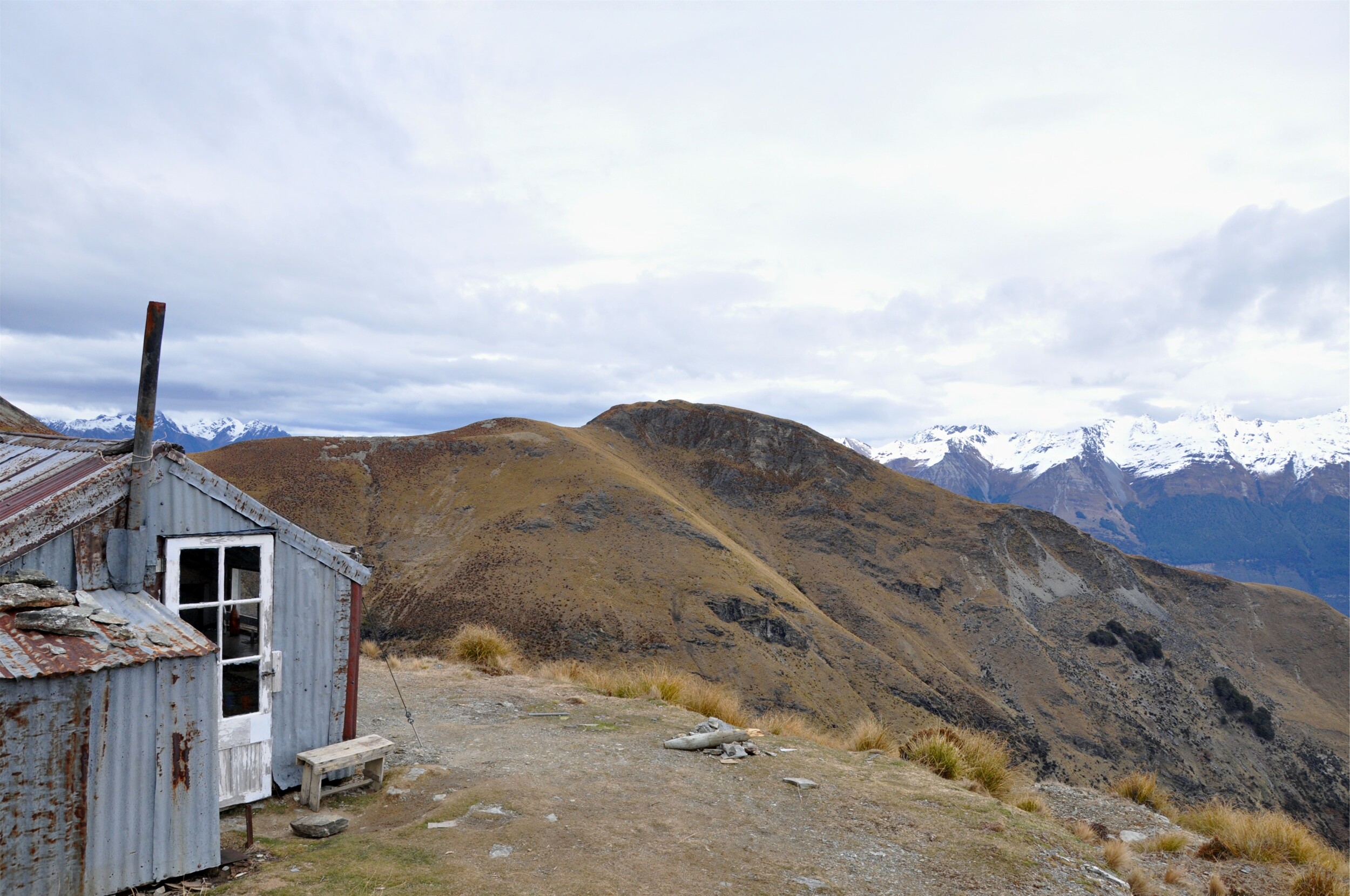With the weather not looking great for another day of skiing, we decided to head out towards Glenorchy and do some hiking instead. Our plan was to visit a valley that had been part of a scheelite mining operation from the early 1880s until relatively recently.

The start of the track followed the old access road up towards the battery site which made for a slightly more gentle climb than many of the tramping tracks we seem to find here. It didn’t take us too long to reach the clearing which once housed the battery, warehouses and other processing equipment.

The first battery on the site was built in the early 1880s when scheelite was found in the area, but following the discovery of a significant amount of scheelite at the nearby Mount Judah mine, larger and larger processing facilities were built. With the increase in demand for scheelite during the first World War, a massive 10-stamp battery was installed here.

As early as 1906, miners who had initially come to the valley in search of gold had transferred their efforts to the scheelite mines. A local mining syndicate was formed and they hand blasted tunnels into the hillside on three different levels to chase the quartz veins along the reef.

It is hard to imagine so much industry in what is now such a bucolic setting, although the fate of the mine was very much tied to global demand for scheelite. During World War I, with scheelite in demand for armaments, the price, which at the time was fixed by the British Imperial Government, jumped 80 per cent on pre-war prices. By the second World War, the New Zealand government have taken over the mines here in order to try maximise production to support the British war effort.

By 1943 the government employed 25 miners at the site and had been extended to 366m (1,200 feet), but despite this massive effort they failed to find significant quantities of scheelite. The State walked away from the mine in 1946, and leased the property out on a profit sharing basis to a few miners.

From the main processing site we picked up some of the old tracks towards some of the old mines and huts. The first stop was the wonderfully named Boozers Hut, we could only imagine what it must have taken to earn that name in a remote early mining settlement.

The hut itself was well preserved, although we later found reports that it had possibly been relocated several years ago to save it from a landslide. Crossing over the stream that ran in front of the hut we continued up through the mines.

After passing areal tramways, other mining huts and assorted equipment and mine tailings we came to the highest point of the track, Heather Jock Hut. I never did manage to find any reliable information on how this historic hut got it’s name. We enjoyed having a look around, but were quite glad not to be spending the night as it was pretty rustic, even for a DOC hut!

The hut was perched on a ledge overlooking the Dart River valley, and in the distance we could just about make out the Routeburn Valley where we had previously hiked. Like so many of the mining camps and huts that we have seen in the mountains both here and in Colorado, it makes you wonder what the original inhabitants thought of these beautiful places.

We started to make our way back down towards the valley floor, passing some more historic mining huts along the way. The innovative system of rock weights to help keep the roof in place probably provides an insight into life up here in these huts. Although a pleasant hike on an early spring day, it must be quite a different story on a windy winters night!

The trip back to the car was much quicker than the climb up the hillside and the steady grade down the old mining roads made for a relatively easy end to the hike. Nevertheless we were glad to get back into town and celebrated being back in civilisation with a nice warming glass of mulled wine.
